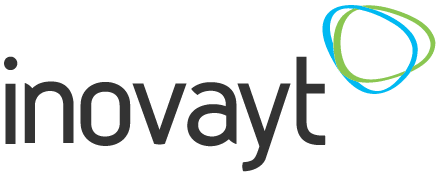
What is asset finance?
If you’re in business, you may have heard the term ‘asset finance’ thrown around once or twice before. Put simply, asset finance is a type of lending that can help your business grow by enabling you to have access to essential items without the need to pay for them upfront. We will be covering what you need to know about asset finance in today's blog.
Asset Finance Explained
As mentioned above, asset finance is a type of business finance designed to help businesses grow. With this type of lending, a business is required to make regular payments in exchange for the use of an asset over a period of time.
It’s not uncommon to hear how businesses struggle in the start-up phase. Growing and scaling your business comes with all kinds of pressures and expectations and it’s often more challenging than it might seem.
Businesses often have unpredictable cash flow which means purchasing large assets, like machinery or even cars, can be troublesome. By using finance, you’ll be able to access your asset now without the need to pay the entire cost upfront.
Inovayt Commercial Finance Broker Melbourne, Sam Arora, says asset finance is “perfect for companies that are looking for flexible financing to improve productivity and expand their business.”
Like with all finance, it’s not a one size fits all. There are many different types of asset finance available.
Equipment Leasing
There are two main types of equipment leasing, operating leases and finance leases. Under a finance lease, the asset provider purchases an asset with an agreement with your business that it will lease the asset over a certain period of time. During the lease period, the leasing business is responsible for all expenses like maintenance, repairs and insurance. The original purchaser will then be able to sell the asset at the end of the lease. Your business will not have the option to gain ownership after the leasing period has ended.
You may be able to claim input tax credits for rental and other charges that are subject to GST with a finance lease.
Hire Purchase
In this instance, a business is leasing an asset from an asset provider who has purchased the said asset and has agreed to lease it to your business. While the asset is being leased, the original purchasing business is responsible for all repairs, maintenance and insurance. A hire purchase is a way to purchase assets by paying instalments over time. At the end of the lease period, provided all payments have been made, your business will then take ownership of this asset.
With hire purchase financing, you may be able to claim input tax credits for the GST payable on interest and fees included in the price of the hire purchase.
Novated Lease
A novated lease can be used to finance a new or second-hand vehicle. You can make repayments from your pre-tax salary with approval from your employer under a ‘salary sacrifice’ arrangement.
This can effectively reduce your taxable income while allowing you to bundle your vehicle’s expenses into one simple payment.
Essentially, this is a three-way agreement and while it might sound confusing, it’s not really. Let us break it down for you.
- You enter into a lease with your lender
- You enter into a ‘salary sacrifice’ arrangement with your employer to cover repayments under the novated lease from your pre-tax salary
- Your employer makes repayments to your finance provider on your behalf from your pre-tax salary
- If you change jobs, you take the car with you and continue to make repayments directly or transfer your agreement to your new employer
With a novated lease, you can use your car for personal use as well as business use.
Chattel Mortgage
A chattel mortgage is another form of asset finance. A lender will provide the finances for a vehicle in exchange for the business making regular payments.
The business assumes ownership of the vehicle, but the lender has what’s referred to as ‘a mortgage’ over it until the loan is paid, including any balloon payments. Businesses can choose to have a balloon to reduce repayment amounts or schedule the repayments to pay off the whole amount over the term.
How are assets financed?
If you decide to explore asset finance, you’ll need to review the various options available. A finance broker will be in the best position to assist you in determining which finance option suits your situation by looking at:
- how much capital you need;
- how long you will need the item/equipment;
- how often will it need to be updated; and
- if you would like to own the equipment at the end of the agreed term.
Asset finance enables a business to fund expensive tools or assets and spread the costs over the lifespan of the asset, so really, it can be a blessing. However, the actual process for obtaining finance may seem overwhelming with so many varying options and complexities for each, which is why it’s best to seek support from a finance broker.
Check out the Inovayt equipment finance calculator.
Recapping asset finance
Business assets, like computers, cars and even machinery, can be financed for businesses of all sizes. Asset finance enables businesses to obtain goods that will essentially help them grow without the need to purchase the item up front.
Asset finance aside, Sam also suggests reviewing your business loan.
“Business loans can provide you with an option of unsecured, as well as secured finance. Depending on your loan, you will also have flexible repayment options available, and in some instances, the ability to make extra repayments and redraw during times of need.”
Who can I speak with about asset finance?
If you’re considering accessing any kind of finance for your business, be it a form of asset finance or a business loan, get in touch now with one of our commercial finance brokers. They’ll be able to assess your situation and work alongside you to develop and implement a suitable strategy to help you access the funds and resources you need.

